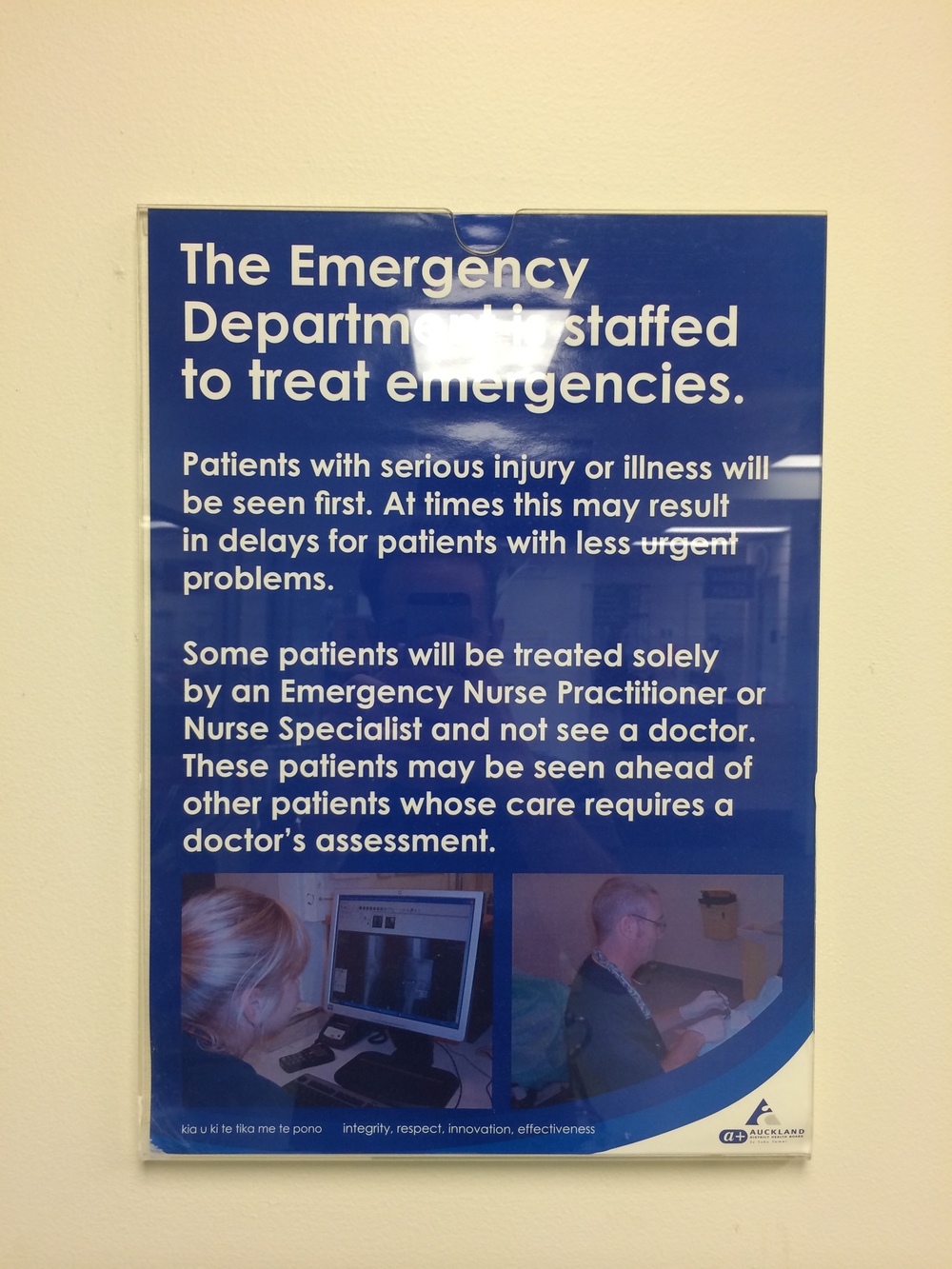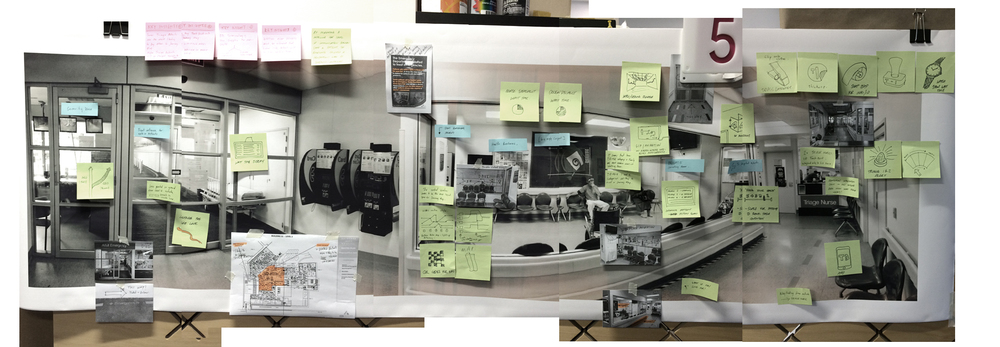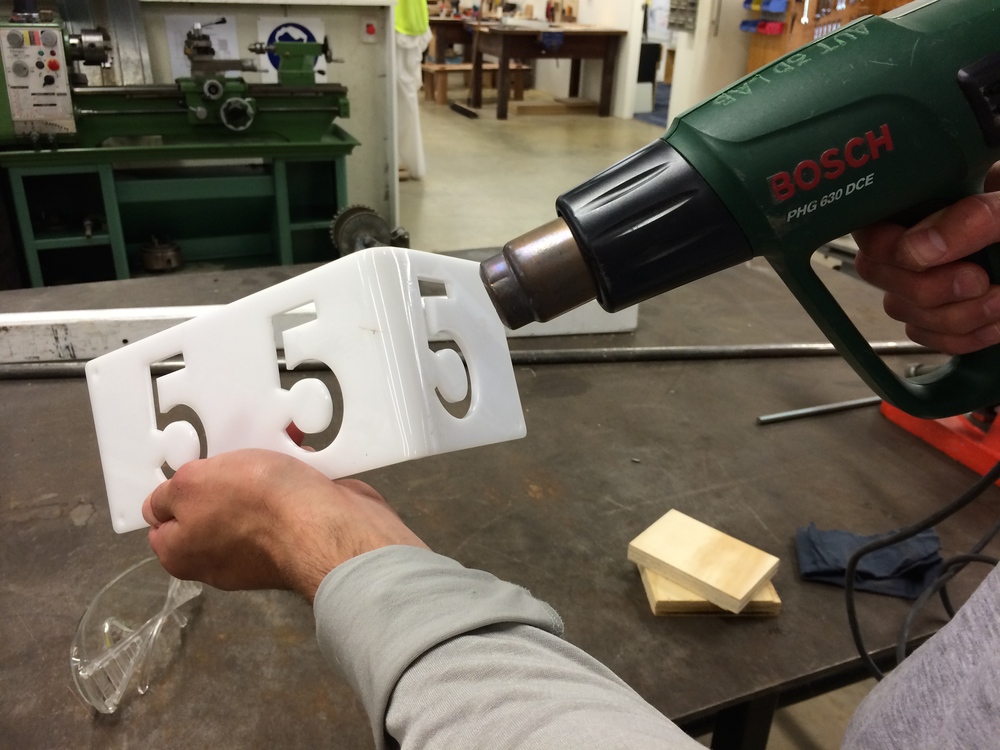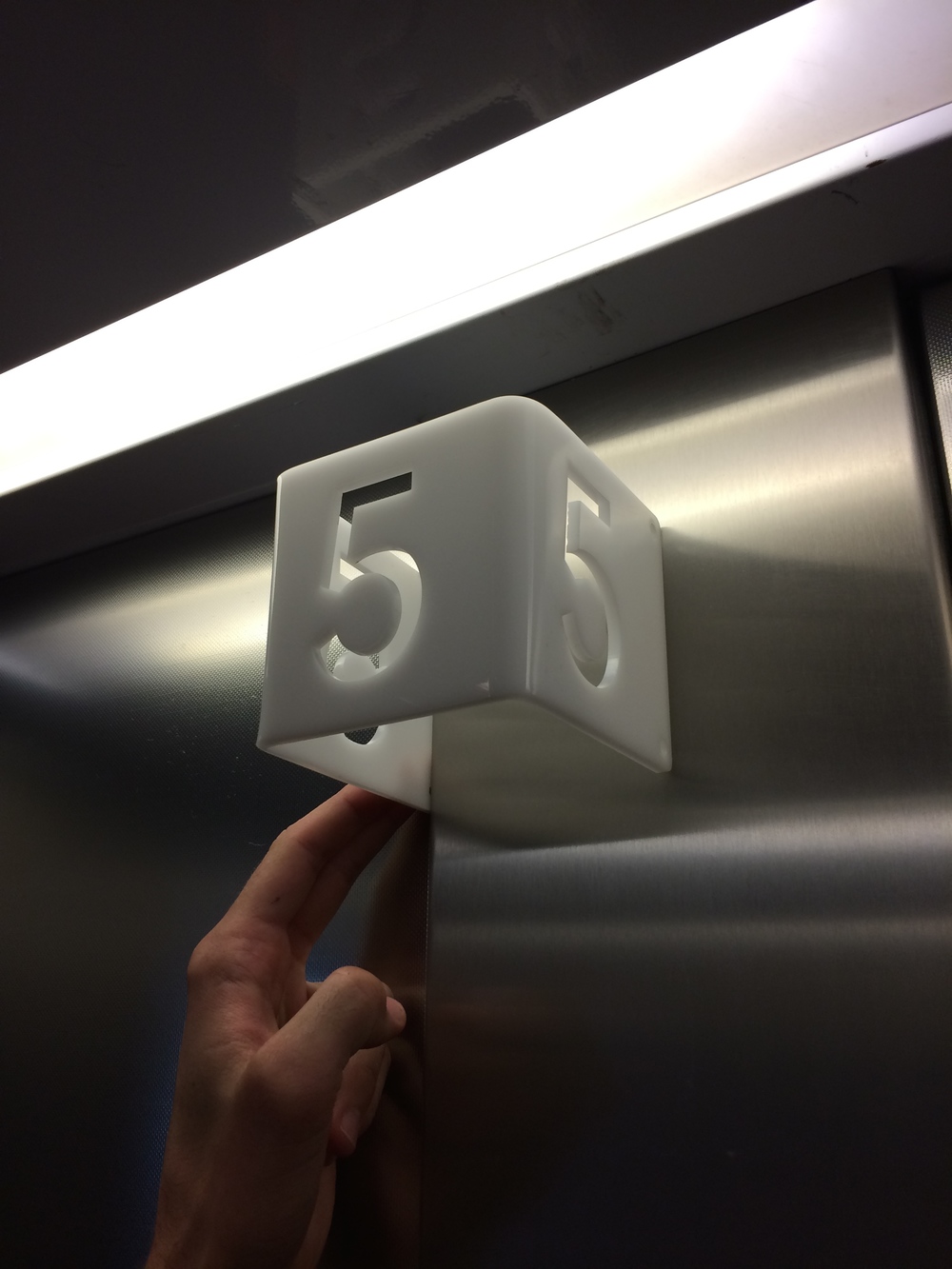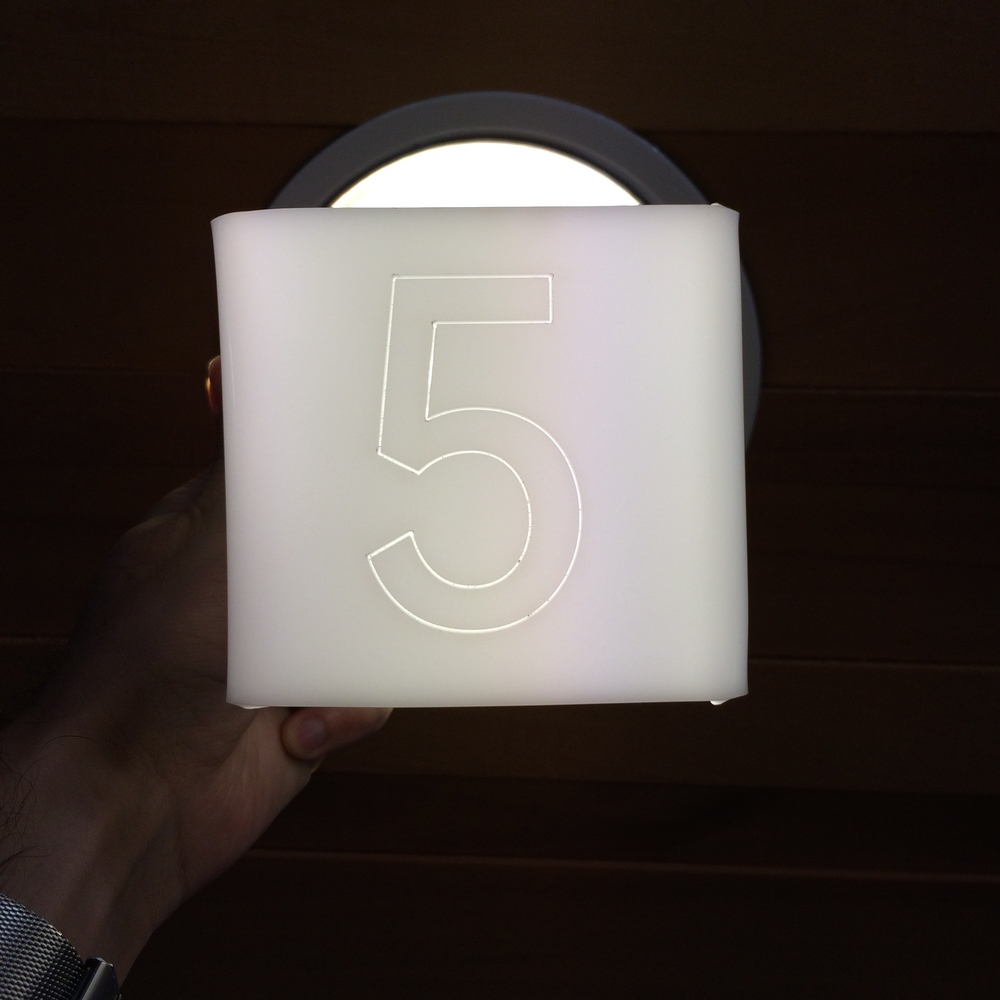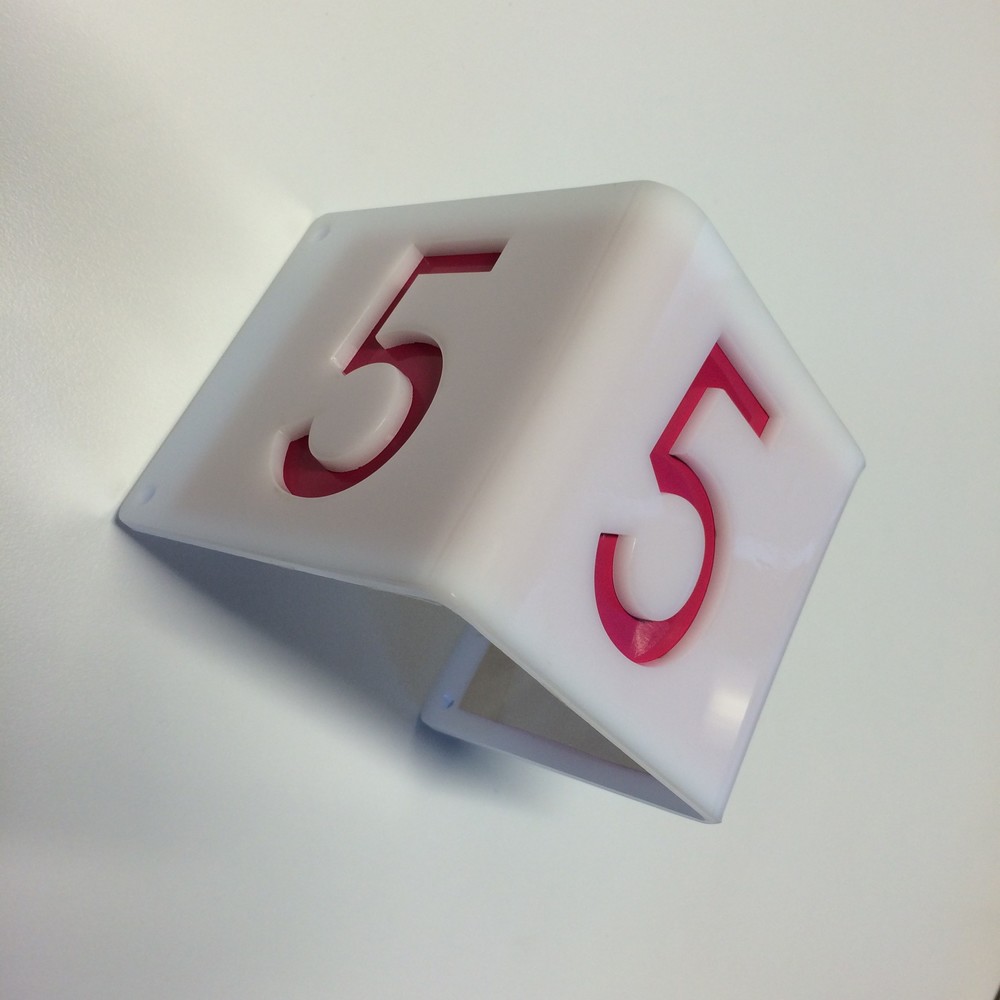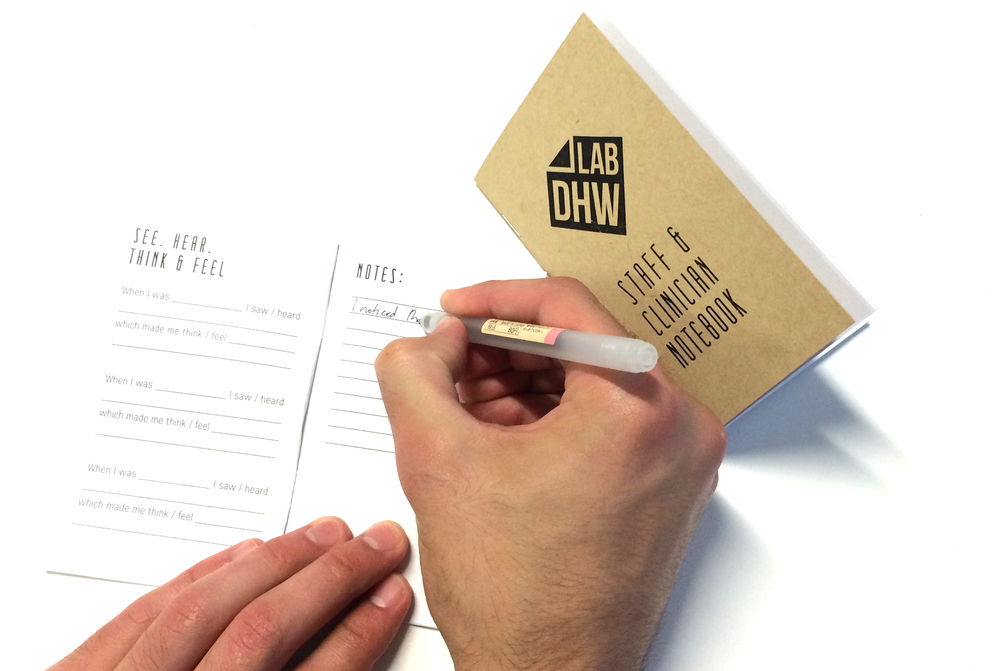
Synthesising user insights can be a real challenge while researching new design opportunities. In the context of the Emergency Department and Auckland Hospital, staff have been trained to work in a certain way, following specific terminology and protocols in order to run an efficient Emergency service. Day in and day out they encounter patients who are unable to make sense of the service pathway they offer and they work around clumsy or unconsidered aspects of their graphic, spacial or product environment... The DHW lab 'Staff and Clinician Notebook' has been developed to help the Staff and Clinician user group to capture key insights from their day to day experience of the ED. The notebook is a practical way in which designers are able to catch a glimpse inside a patients' pathway through the ED from a staff perspective.
Key methods from the notebook include:
See, hear, think feel - A simple fill in the blanks exercise aimed at unpacking specific service situations in the ED.
Test your Assumptions - A reflective tool designed to question assumptions the staff make about the ED patient experience.
The Five Whys - Used to delve deeper into the underlying motivations for a specific behavior or opinion.
Storyboarding - A series of drawings that visualise a specific patient experience in a sequence of events.
Heres' an Idea - An opportunity for staff to write down or draw ideas they have for how to improve the patient journey through ED.
This first Iteration of the 'Staff and Clinician's Notebook' is a prototype. Testing this Method and receiving feedback from staff will allow us to improve and refine this research technique for the projects ahead.
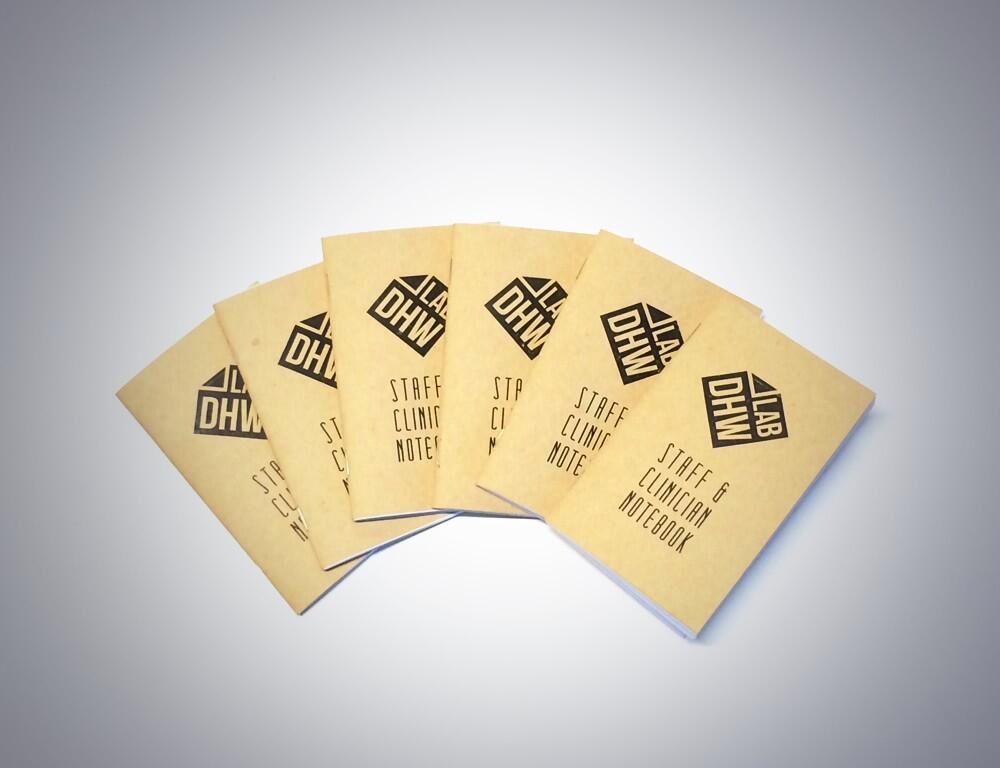


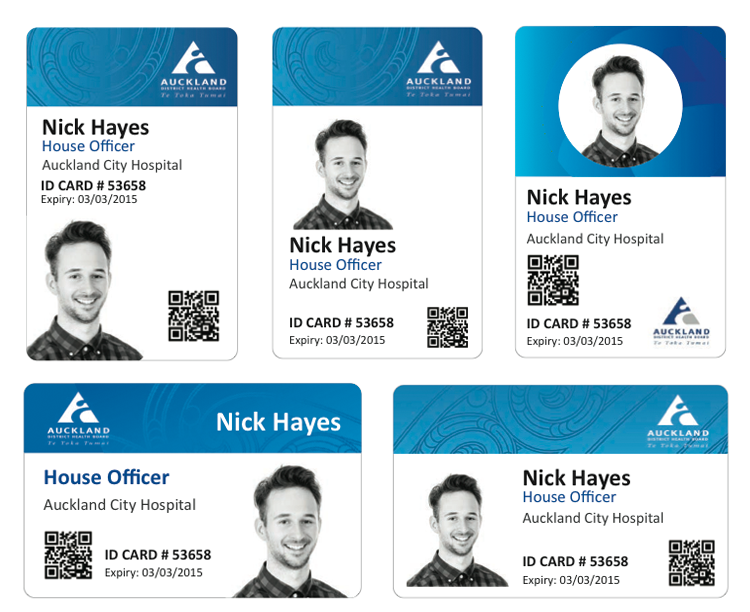 At face value, the project seemed to be re-branding exercise, redesigning the graphics of the current card. But pushing the boat out a little, we began to question what the underlying purpose of the ID card was: How easy is it for patients to identify staff members? What are the key problems with the existing, lanyard/clip system? With a little research, we discovered that staff carried around three items on their lanyard: an Id card a coffee card and swipe card- how might such functions be combined or integrated? A nurse tipped us off about the infection risk of lanyard card holders, and some
At face value, the project seemed to be re-branding exercise, redesigning the graphics of the current card. But pushing the boat out a little, we began to question what the underlying purpose of the ID card was: How easy is it for patients to identify staff members? What are the key problems with the existing, lanyard/clip system? With a little research, we discovered that staff carried around three items on their lanyard: an Id card a coffee card and swipe card- how might such functions be combined or integrated? A nurse tipped us off about the infection risk of lanyard card holders, and some 

